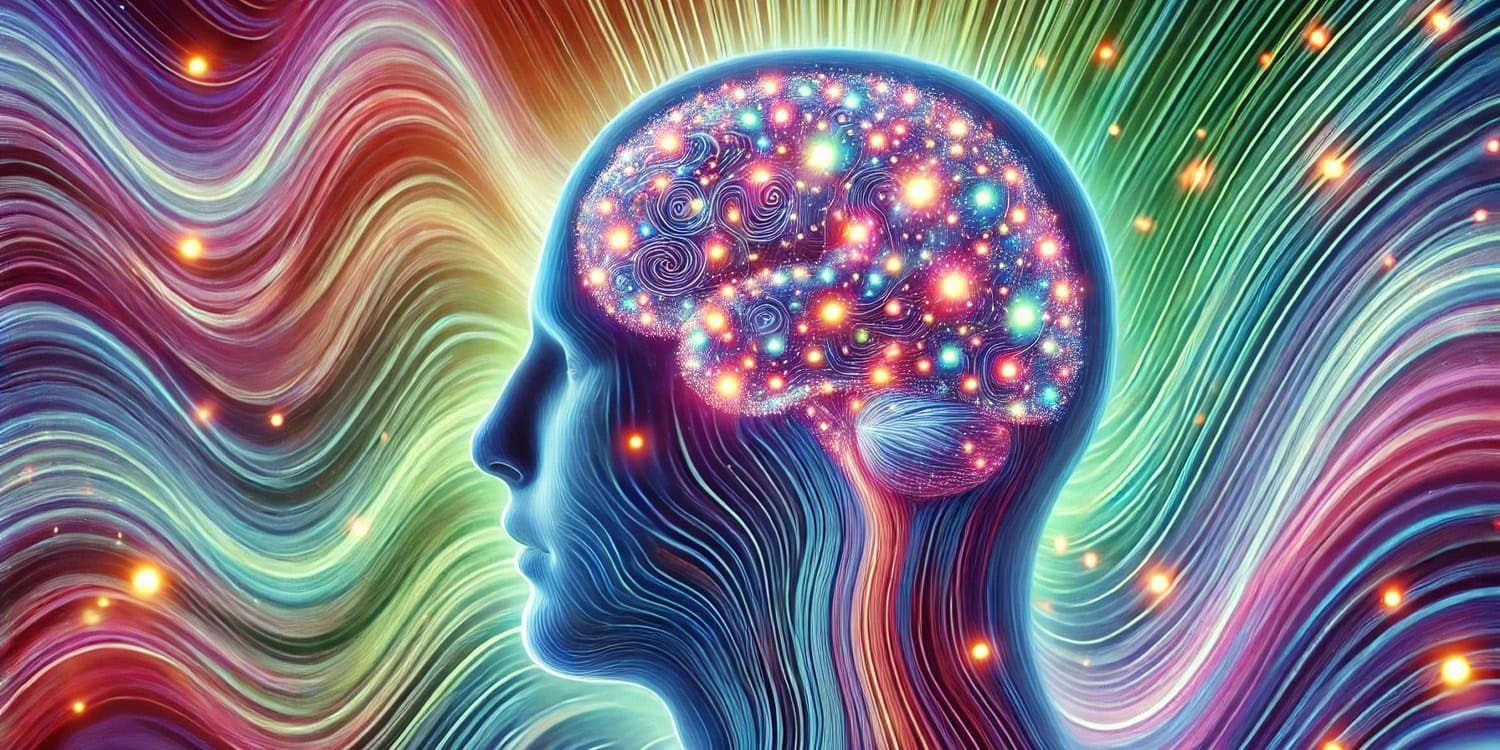Researchers have long been intrigued by ketamine’s ability to alter consciousness and its potential therapeutic uses, particularly in treating mood disorders. A recent study published in Translational Psychiatry adds a new layer to this understanding by investigating how ketamine impacts brain function, specifically focusing on high-order interactions in brain activity.
Using portable electroencephalography (EEG), the researchers found that ketamine induces changes in brain dynamics, notably increasing redundancy—repetitive patterns of information—in the alpha frequency band, which is linked to shifts in conscious awareness and dissociative experiences.
The researchers were interested in understanding how ketamine alters brain function and the broader implications for its potential therapeutic uses. Ketamine, initially developed as an anesthetic, has gained attention in recent years for its rapid antidepressant effects, even for individuals with treatment-resistant depression. However, its use also induces dissociative experiences, where people feel detached from reality or themselves. These experiences are thought to be linked to changes in brain dynamics.
Past studies have used neuroimaging techniques like fMRI and EEG to capture these brain changes under ketamine. However, these methods often focus on single points of interaction between different regions of the brain. This study, in contrast, used a novel method that captures high-order interactions—how multiple regions of the brain work together as a system, which may provide a more comprehensive understanding of how ketamine affects brain function.
Additionally, the researchers wanted to test whether portable EEG devices could offer a reliable way to measure these changes. Portable EEG systems are less cumbersome than traditional setups, making them more feasible for real-world applications, including in clinical settings or at home.
“There are three main topics included in this work: alteration of consciousness, complexity and high-order interactions, and portable EEG,” explained study author Rubén Herzog of the Paris Brain Institute. “Each of them are very interesting to me for different reasons. Alteration of consciousness provides a controlled way to perturb and study human consciousness in a scientific way. Also, many mind-altering drugs have started to demonstrate a big potential for mental health disorders, but before using them on a global scale, we need rigorous and systematic study on how they work, their consequences and their potential negative effects.”
“Brain complexity, especially high-order interactions, are an emerging tool for working with complex systems. From a theoretical point of view, they are much more suitable for studying biological systems like the brain, because they can directly capture the collective behavior or many elements as a single functional unit. Besides, they maximize the information that can be retrieved from low-density EEG recordings, as the one we used.”
“Finally, portable EEG holds great promise for future applications and home medicine or brain-machine-interfaces. However, to exploit their potential we need to be able to extract as much information as possible from those devices, where the signal is not as good as a device that would be used in a laboratory where many variables can be controlled. These three topics together create a synergy of interests. ”
The study used a double-blind design, meaning neither the participants nor the researchers knew who was receiving ketamine or a placebo during the sessions. Thirty healthy male participants between the ages of 18 and 55 were recruited for the study. The researchers limited the study to men to reduce variability and prevent potential pregnancy risks in women. All participants were screened for any psychiatric disorders, history of substance abuse, or other serious health conditions to ensure a homogenous sample.
Each participant received two infusions—one of ketamine and one of a saline placebo—four weeks apart. While the participants received the infusions, researchers used a 16-channel portable EEG system to measure their brain activity. The EEG data was collected during two conditions: a resting state with eyes closed and an auditory oddball task, a common method for studying how the brain responds to repetitive versus unexpected stimuli.
The auditory oddball task involved listening to a series of tones. Most of these tones were the same (“standard” tones), but occasionally a “deviant” tone was played. Researchers wanted to see if ketamine affected how the brain processed these predictable versus unexpected stimuli.
In addition to the EEG recordings, participants completed questionnaires before and after the infusions to assess subjective experiences, such as feelings of dissociation, derealization (a sense of detachment from surroundings), and changes in conscious awareness.
The researchers found that ketamine increased redundancy in brain activity, particularly in the alpha frequency band (8-12 Hz) during the resting state. Redundancy refers to repetitive information in brain signals, suggesting that under ketamine, certain brain regions were sending similar information to multiple other regions. This effect was most pronounced when participants were resting with their eyes closed, a state often linked to altered consciousness and dissociation.
The increase in redundancy supports the idea that ketamine reduces “top-down” control—how the higher-order brain regions govern lower-order sensory processes. This shift in control could explain the dissociative experiences reported by participants, where normal sensory processing becomes disrupted, leading to feelings of detachment from reality.
When participants were engaged in the auditory oddball task, ketamine still influenced brain dynamics but in a more nuanced way. The drug increased redundancy primarily for the predictable “standard” tones, but not for the unexpected “deviant” tones. This suggests that ketamine may alter how the brain processes familiar, predictable information more than surprising or novel stimuli. In other words, the brain under ketamine seems to amplify responses to what it expects, rather than what it doesn’t expect.
“Finding that performing a task reduced the effects of ketamine on brain activity was surprising, as it suggests that cognitive tasks could help in attenuating their effects, similar to grounding exercises,” Herzog told PsyPost. “Also, finding large effect sizes with a portable EEG was unexpected, because these devices have small signal to noise ratio.”
Interestingly, the study found that changes in brain dynamics during ketamine administration were associated with subjective feelings of derealization. Specifically, an increase in redundancy in the theta frequency band (4-8 Hz) correlated with higher reports of derealization, further linking the brain’s altered information processing under ketamine to dissociative experiences.
Herzog highlighted the three main takeaways from the study: “1) Ketamine induces more redundant brain activity, meaning the same signal is repeated in the brain. 2) Performing a task during the effects of ketamine reduces its impact on brain activity. 3) On a more practical level, portable EEG devices, which can be used at home, can track changes in states of consciousness.”
As with all research, however, there are some limitations. The portable EEG system used in this study had only 16 channels, which is a lower number than more traditional EEG setups. While this was sufficient to capture broad patterns of brain activity, it limits the spatial resolution of the data. High-density EEG or other neuroimaging techniques could provide more detailed insights into the specific brain regions involved in ketamine’s effects.
In addition, the study only included 30 participants, all of whom were healthy men. This limits the generalizability of the findings, as the effects of ketamine on brain function could differ in women or in individuals with psychiatric disorders, such as depression or post-traumatic stress disorder.
“Our results can be interpreted only in the context of healthy participants,” Herzog noted. “The effects that we’ve found could be totally different in a population with mental disorders, so our findings cannot be used, by now, to understand the therapeutic effect of ketamine on mental disorders such as depression or PTSD.”
“Now I’m collaborating with a team that works with ketamine as a treatment for depression. Our experiment used only healthy participants, but to understand the therapeutic role of ketamine we need to work with a population that actually has a diagnosis of mental illness.”
The study, “High-order brain interactions in ketamine during rest and task: a double-blinded cross-over design using portable EEG on male participants,” was authored by Rubén Herzog, Florentine Marie Barbey, Md Nurul Islam, Laura Rueda-Delgado, Hugh Nolan, Pavel Prado, Marina Krylova, Igor Izyurov, Nooshin Javaheripour, Lena Vera Danyeli, Zümrüt Duygu Sen, Martin Walter, Patricio O’Donnell, Derek L. Buhl, Brian Murphy, and Agustin Ibanez.




